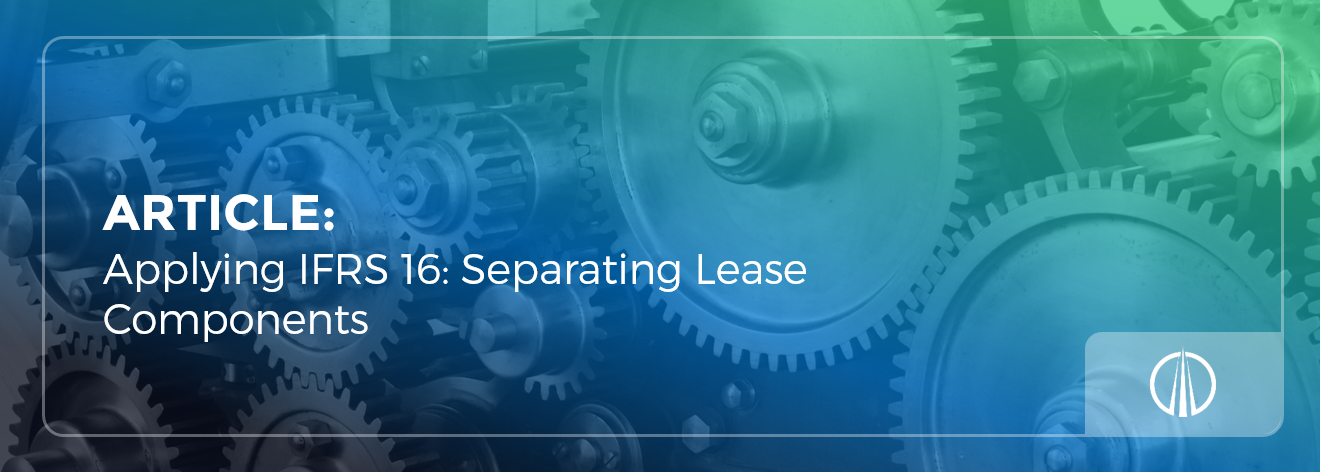Applying IFRS 16 – Separating Lease and Non-Lease Components
Updated 10th January 2023 | 4 min read Published 21st August 2018

Wouldn’t it be great if all elements or components within a lease agreement related to the lease and would, therefore, fall under IFRS 16? However, contracts often combine different obligations from suppliers which result in different lease components and separate non-lease components.
The Implementation Deadline is Painfully Close
If your business leases and most businesses do then you should by now be prepared to set out on the path to compliance with the new lease accounting standards – IFRS 16 (and from FASB, ASC 842). If you have yet to get to the planning stage, then the clock is taking as the go-live date of 1st January 2019 approaches for implementation of IFRS 16 – you would be well advised to read the Innervision blog “Tips For A Successful Lease Accounting Transition Project”. This will help you identify some of the key work that needs to be planned and some of the resources you will need to allocate to the task – start now while there is still time but start in earnest.
In looking at identifying leases then you may wish to reference the Innervision blogs – “Applying IFRS 16 – identifying your business leases”.
Whether you are just beginning or well down the path to compliance one of the essential requirements is to be able to identify the lease components of any equipment or service contract to which the company has outstanding and committed liabilities. The IASB requires you to identify that lease component from any non-lease components and account for it under IFRS 16.
Identifying A Lease
A lease component is any part of any contract that gives the right of use of an asset for a fixed period of time in exchange for a consideration. If there is no “right of use of an asset” conveyed, then there is no lease. The IFRS 16 standard explicitly sets out in paragraph 32B the criteria for identifying in any contract whether the right of use of an asset is a separate lease component.
- The lessee can benefit from use of the underlying asset either on its own or together with other resources that are readily available to the lessee
- The underlying asset is neither highly dependent on, nor highly interrelated with, the other underlying assets in the contract
Clearly in the case of leasing a tractor unit and trailer then either could be used separately, with other tractors or trailers or together – lease components exist in the contract.
If the contract has both a “right of use” component and a maintenance or service component, then it is necessary to allocate a cost to each component which would be based on the price to buy each separately. The standard takes into consideration that identifying such prices is not always possible and, in such cases, allows the lessee to estimate based on experience and available market information each stand-alone price. From here the value of the asset and its associated committed liabilities under the lease can be accurately assessed for treatment under IFRS 16. Any non-lease element and its associated liabilities can be treated as such.
Treatment of Lease and Non-Lease Components
Under IFRS 16, there are several practical expedients available to make applying IFRS easier and there is in IFRS 15 good guidance on allocating transaction costs (whether real or, as above, estimated) against contract obligations.
An example might be where the lease agreement covered both a server and its associated maintenance costs. It is likely that the lease component cost which would, of course, apply to the server can be identified or a realistic estimate of that cost can be reached. Likewise, the cost element of the maintenance (generally much lower) can be isolated. The lessee, provided always that similar leases are treated the same, can take the practical expedient of treating the whole contract (lease component and non-lease component) as one lease contract. It follows therefore that all server lease contracts entered into by the lessee must be treated in the same manner.
Where, however, this practical expedient could not be used either because similar leases did have the components separated and treated separately or because the service component represented a substantial element of the lease periodic cost then this expedient is not available. Embedded derivatives as defined in 4.3.3 of IFRS 9 are likewise outside the compass of this expedient. Any non-lease component must be accounted for using other relevant accounting standards.
Conclusion
IFRS 16 requires a lessee to account for each lease component in a contract separately from non-lease components unless the lessee applies the practical expedient to account for lease and non-lease components as one lease and applies this to all similar lease contracts.
The secret is that if you identify the lease component and non-lease component of any contract and utilise Innervision’s LOIS Lease Accounting software solution then the necessary accounting treatments are done for you today and going forward – contact us for a demo.
To find out more about the new definition of a lease and separating lease and non-lease components under IFRS 16, download Innervision’s eBook “Identifying A Lease – a guide to navigating the definition of a lease under the new lease accounting standard” by following the link below.

